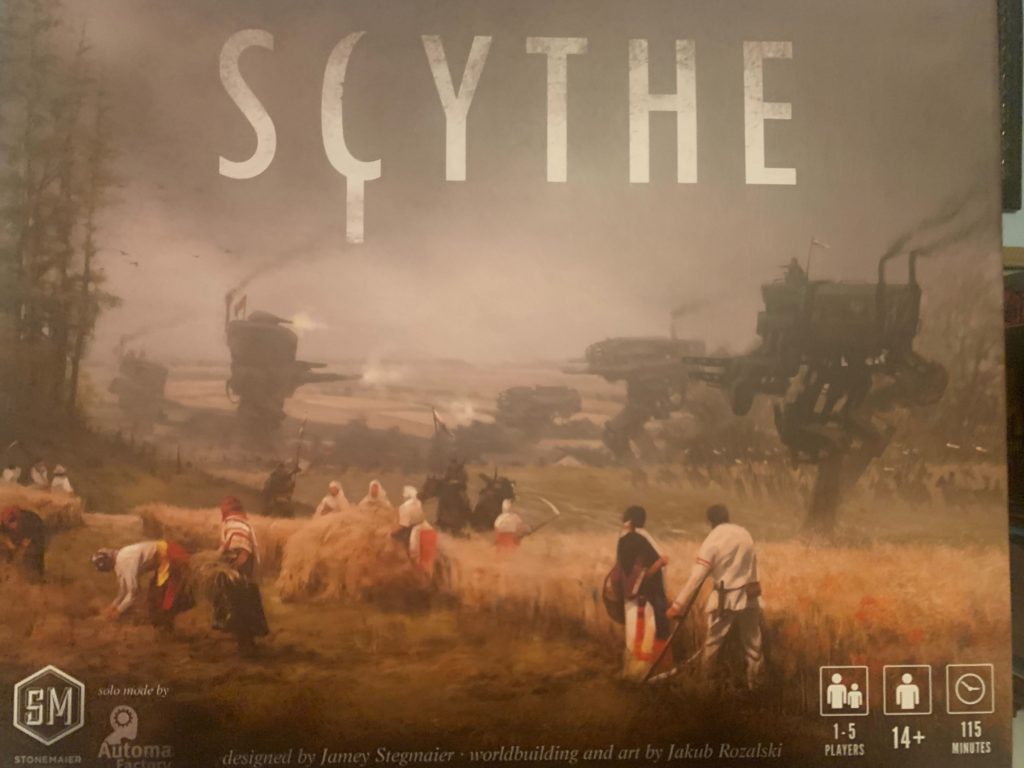
I know, I know, how I have managed to be a board gamer this long without playing Scythe is beyond me. It is all over hot lists and constantly gets critical praise. So I figured now is a better time than never to jump in with my group and see what all the hype is all about.
Scythe Overview
Scythe is a board game for 1-5 players set in an alternate-history 1920s period. It’s a resource management, worker placement, strategy game where players build their own economies as they attempt to gain control over territory and resources. The game is set in a fictional version of Europe, with each player starting in their own corner of the map. Players control a group of mechs, faction leaders, and workers, that they use to explore the board, produce and gather resources, and engage in combat. The game ends when any single player has completed their 6th achievement. After that the scores are calculated and the player with the most money is the winner.
Board Set Up
Scythe game setup is not too daunting and the rule book does a good job of breaking down the board set up and the player set up. For the board set up, start by placing all of the encounter tokens on the spots with with respective icon. Set all resource tokens and coins in a supply and the 2 combat dials next to the game board within reach of all players. Shuffle up the combat cards and place them in designated space in the upper right corner of the board. Shuffle up the factory cards and deal out a pile of cards equal to the number of players in the game plus 1. Place that pile in the respective space on the board. Objective and encounter cards are shuffled and placed in their spots on the board. Finally, a single structure bonus tile is selected and place on the board in the designated area and board set up is complete.
Player Set Up
Player set up is quick too. Shuffle up faction and player mats and deal one to each player. There are certain combinations that are not allowed. These are outlined in the rule book and if a player gets this combination, they simply redraw player and faction mats. Players grab the Faction leader, Mechs, and bits of their color and do their best to sit near the corresponding faction space on the map. Players collect the coins, combat and objective cards as outlined on their boards and set their starting power and popularity. Place your faction leader in the faction start space on the board and take 2 workers and place them in any 2 spaces next to the leader.
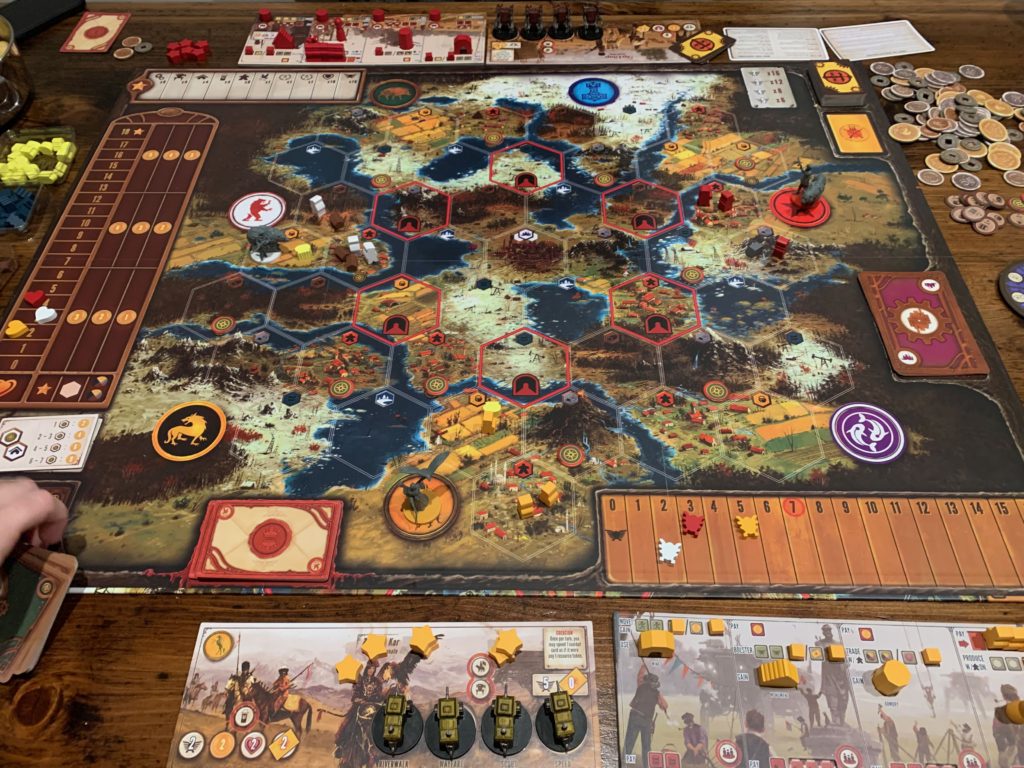
All of the structures, upgrade cubes and remaining workers, are placed in spots in the upper half of the player mat. The recruit tokens are placed in the circles on the bottom half of the player mat and the mechs and stars are placed on the faction mat in their designated spots. This all sounds like a lot but we had this down by our second game.
Scythe Gameplay
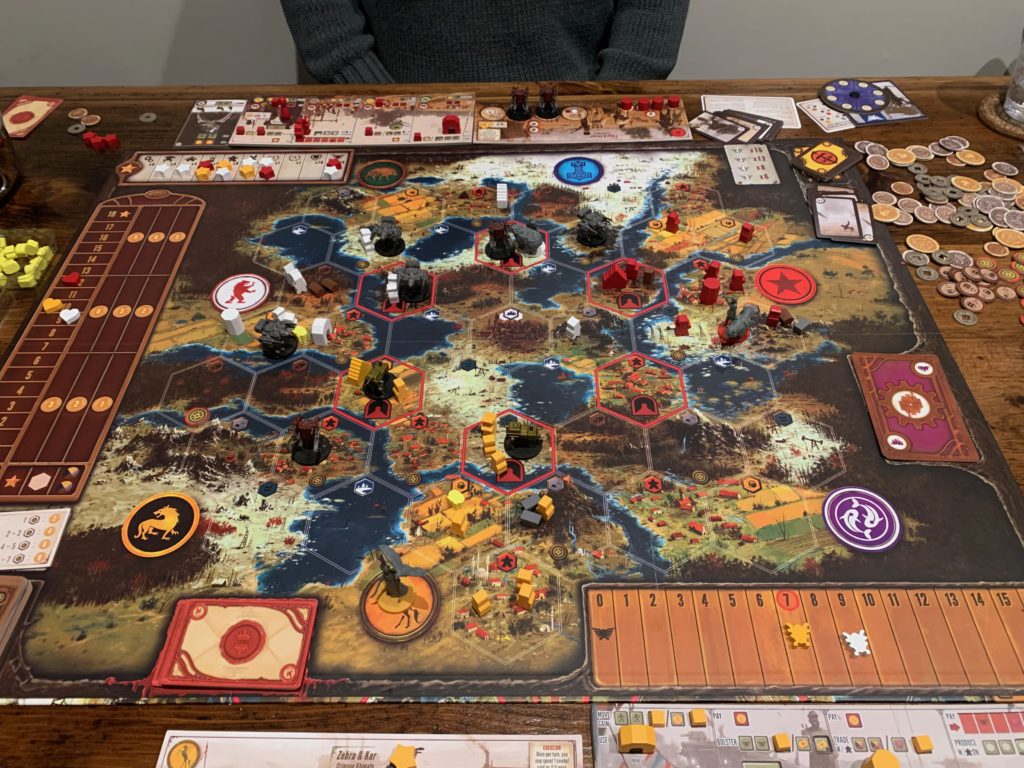
The object of Scythe is to have the most money when the end game conditions are met. To this end, Scythe offers a lot of different paths to victory. When the game first starts, players have many different options for how to earn points, whether it’s through building structures, expanding their territory, or recruiting new units. As you play, you’ll start to discover which strategies work best for your chosen faction, and your path to victory will start to become clearer. That being said, the game remains open-ended enough that you can still change up your strategy if needed.
While there is a lot going on, game play is broken down to a simple action selection mechanism. On your turn, move your pawn to one of the 4 spots on your player board and then choose to take either, neither or both of the top and bottom row actions in that section. These 8 actions that you can take are:
- Move: Players can use this action to move their faction leaders, mechs, and workers around the board. They can choose to move to an adjacent space or the can have a mech carry workers to another space.
- Deploy: Players can use this action to place new mechs onto the board, but they must be deployed on a space with a worker.
- Produce: Players can use this action to generate resources, such as food, wood, metal or even additional workers! You can only choose to produce the goods for spaces that you control that have workers on it.
- Upgrade: Players can use this action to upgrade their top and bottom row. Simply move one cube from the top row to the bottom, allowing the player to gain bonuses for the top row and pay less resources for the bottom row actions.
- Trade: Players can use this action to acquire any 2 resources or gain 1 popularly.
- Build: Players can use this action to build structures on the board. These structures provide various benefits, such as additional popularity, resources, or special abilities.
- Enlist: Players can use this action to gain one time bonuses on their faction mat. This also unlocks bonuses based on actions other players next to you take.
- Bolster: Allows you to gain power or combat cards for future combats.
All of these actions combine to help increase popularity and continue to upgrade your faction. While there is combat in the game as part of movement the game treats it as a last resort. Yes it is an end game condition but you will lose popularity which is important for end game scoring. Engaging in combat is not a decision to take lightly.
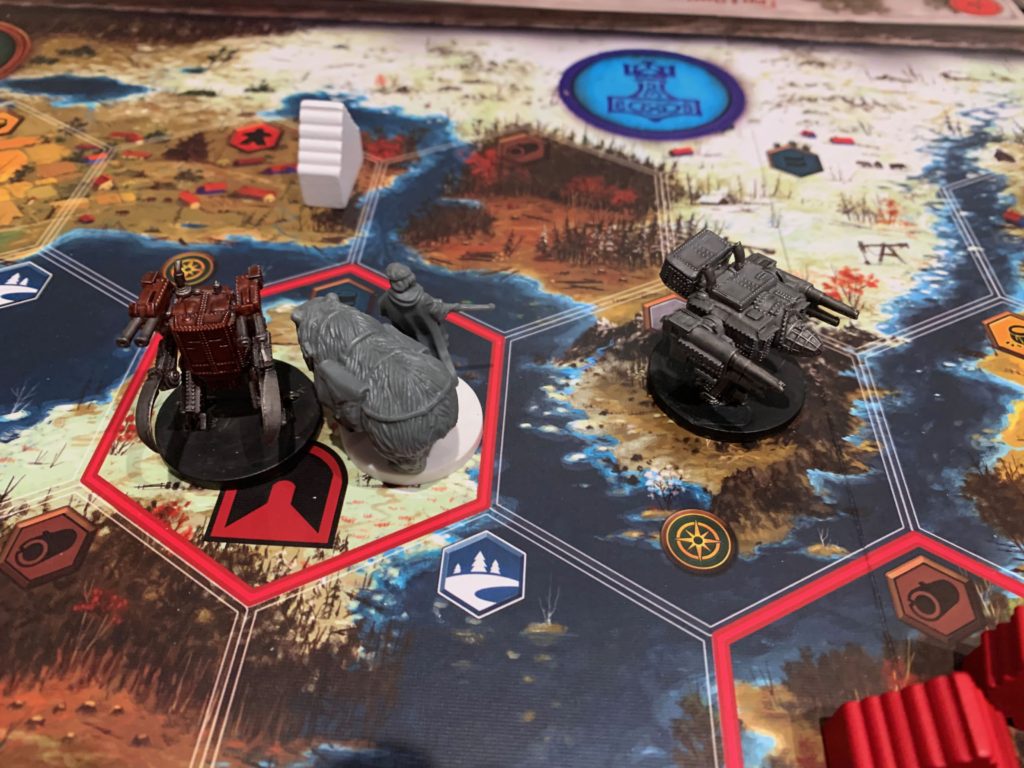
Scythe Impressions
Scythe is a masterfully designed game that combines strategy, engine-building, and asymmetrical characters to create an immersive and engaging experience. The game’s mechanics are intuitive and easy to pick up once you understand the basics, making it accessible to players of all skill levels. The game’s Eurogame style makes it a great choice for those who enjoy games that focus on strategy and resource management.
One of the things that sets Scythe apart from other games is its treatment of combat as a last resort option. This adds a unique layer of strategy to the gameplay, as players must carefully weigh the costs and benefits of engaging in combat. Instead of relying on combat to win the game, players must focus on building up their engines and expanding their influence in order to secure victory.
The engine building in the game is also intuitive and makes for an engaging experience. Players must carefully manage their resources and plan out their actions in order to build up the most powerful engine possible. The asymmetrical characters in the game also keep the game fresh with each play, as each character has its own unique abilities and playstyles.
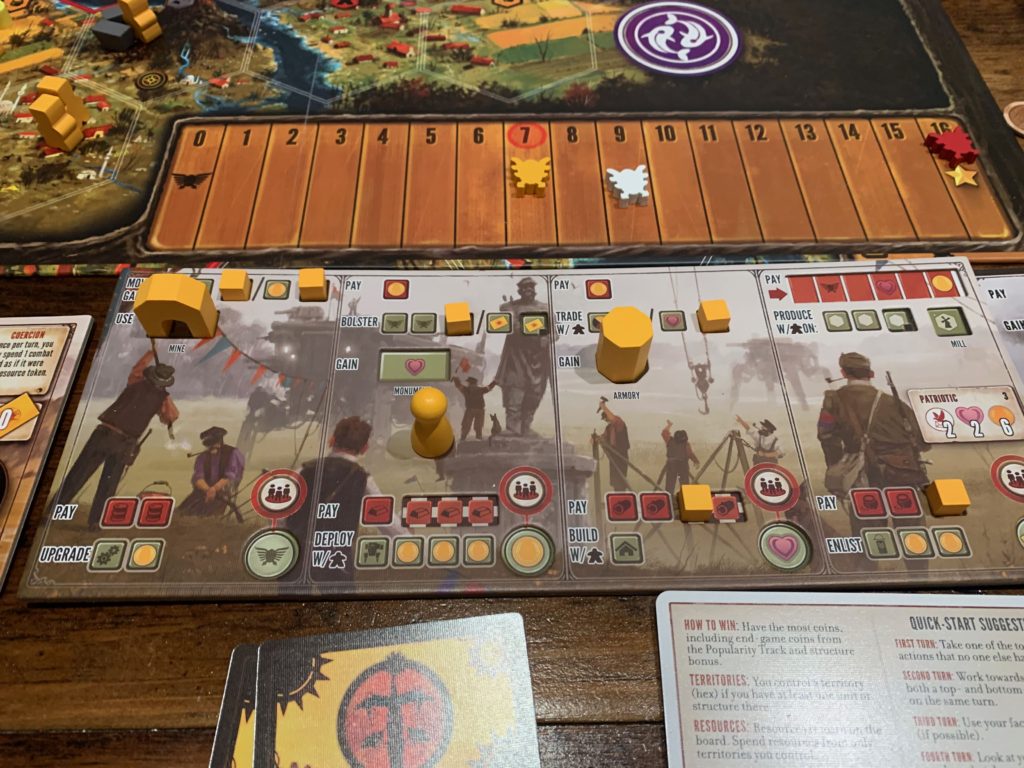
Given the high ratings and praise it receives, it’s not hard to see why Scythe is so well-regarded in the board game community. It’s a game that can be played again and again without feeling repetitive, and it’s a great choice for both casual and hardcore gamers alike. I am sad that I have not played this sooner but I will certainly be enjoying my plays of this game for years to come. It is a modern classic.
Scythe Final Verdict

Scythe is a must-play game for those who love strategy and resource management.





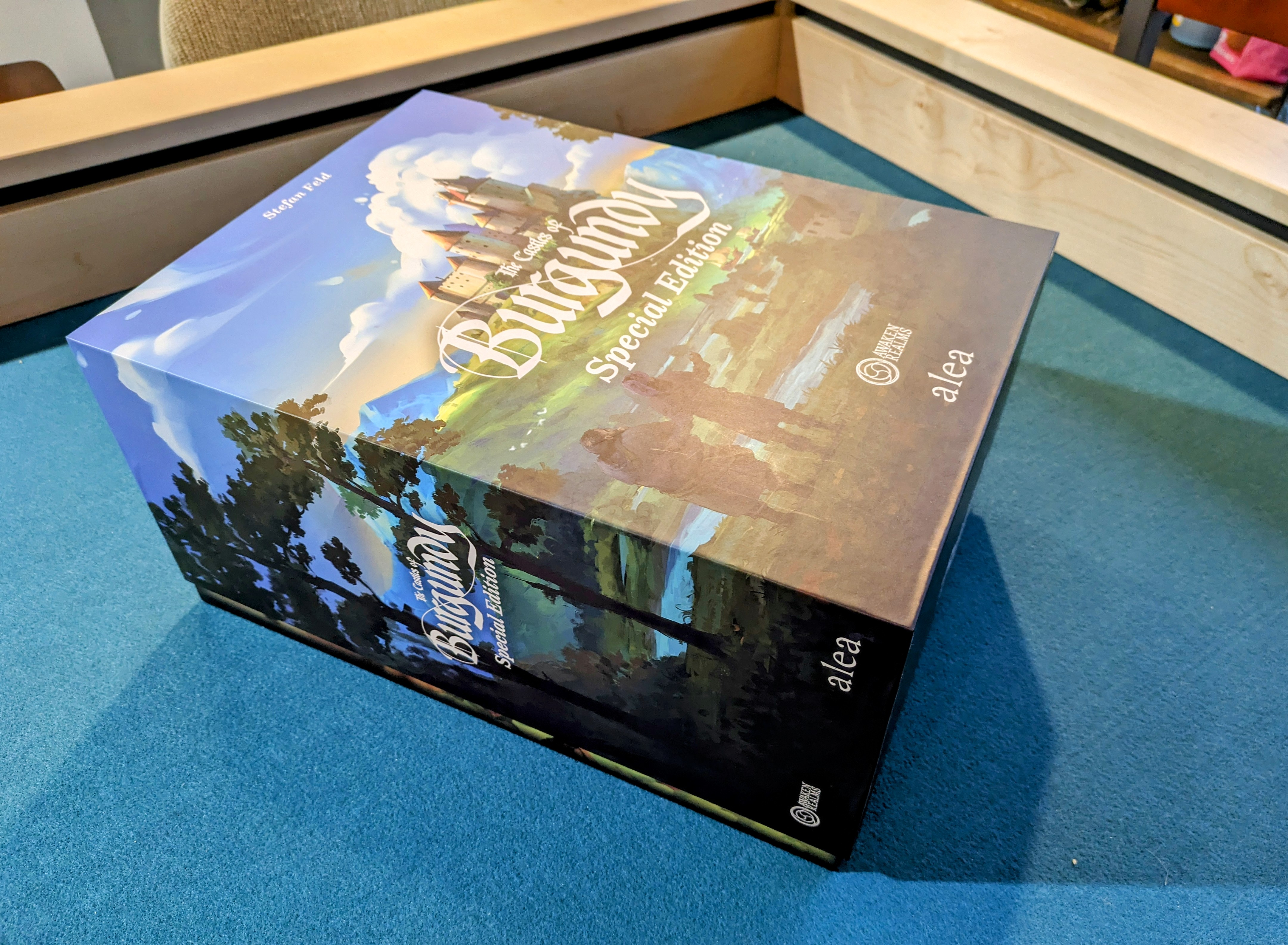
Leave a Comment